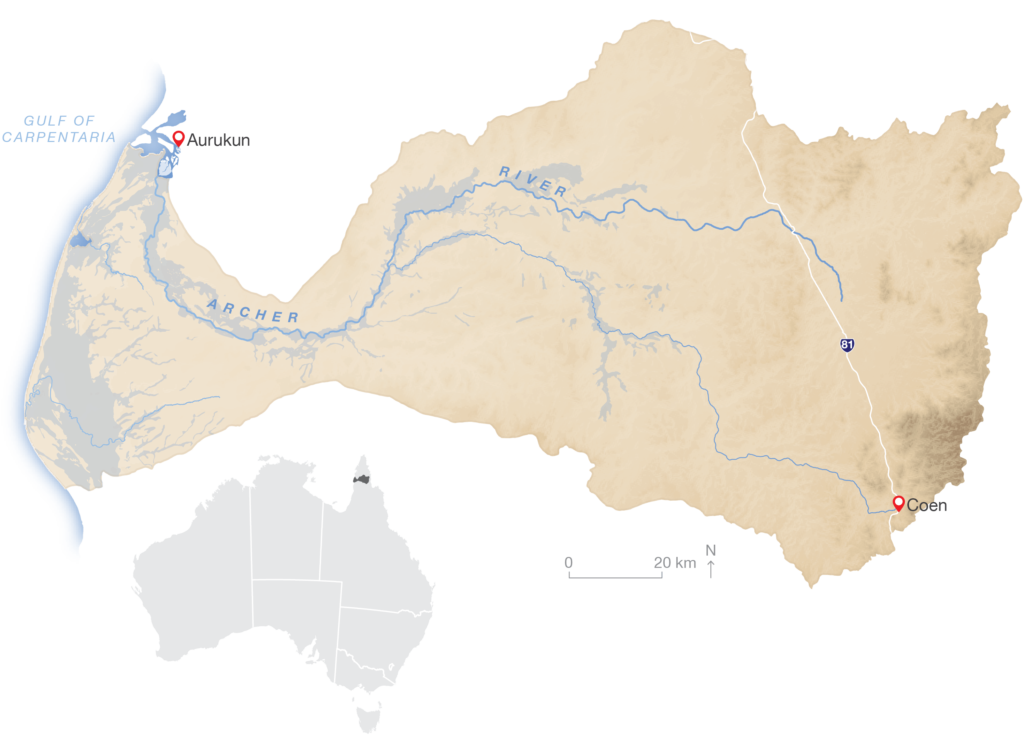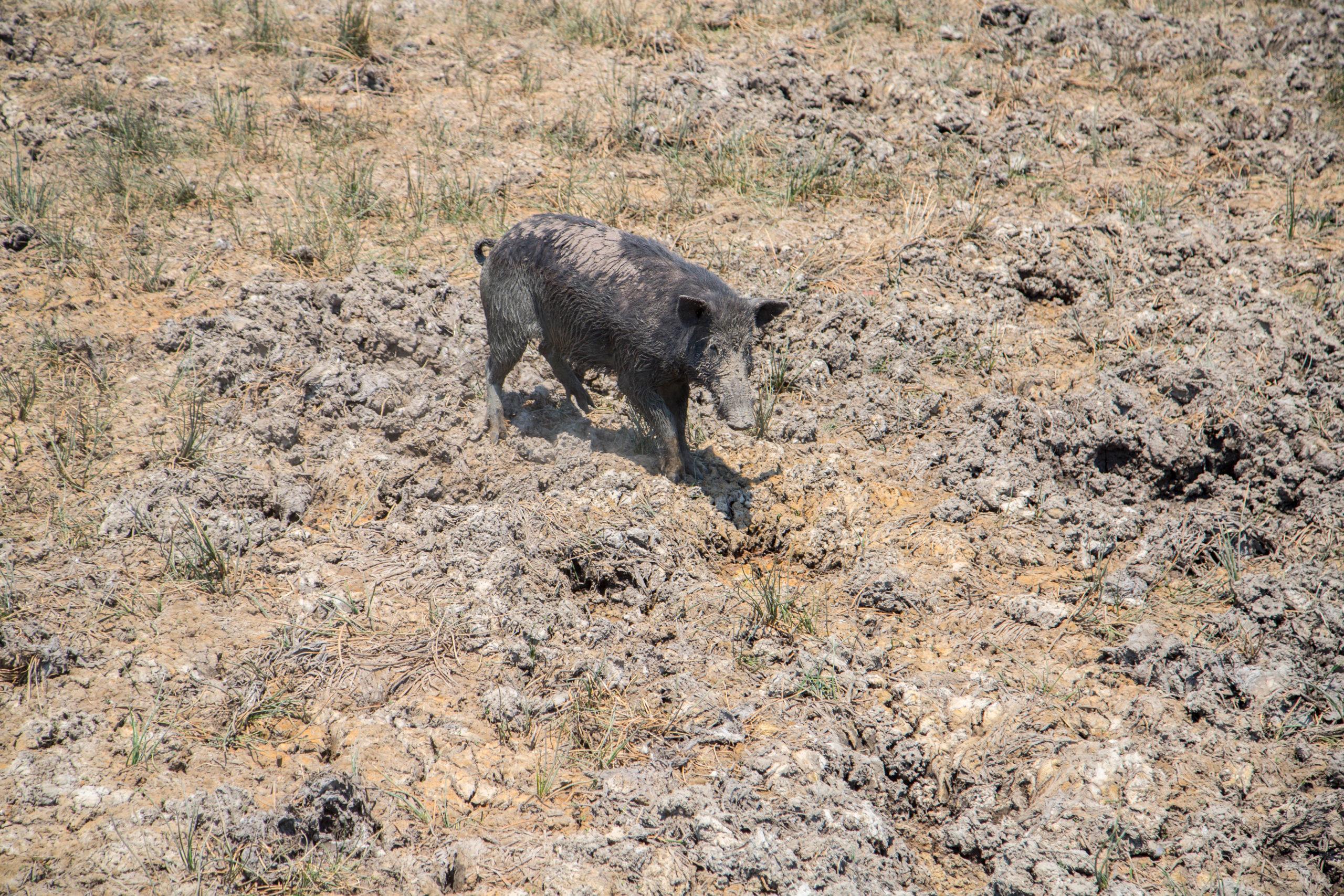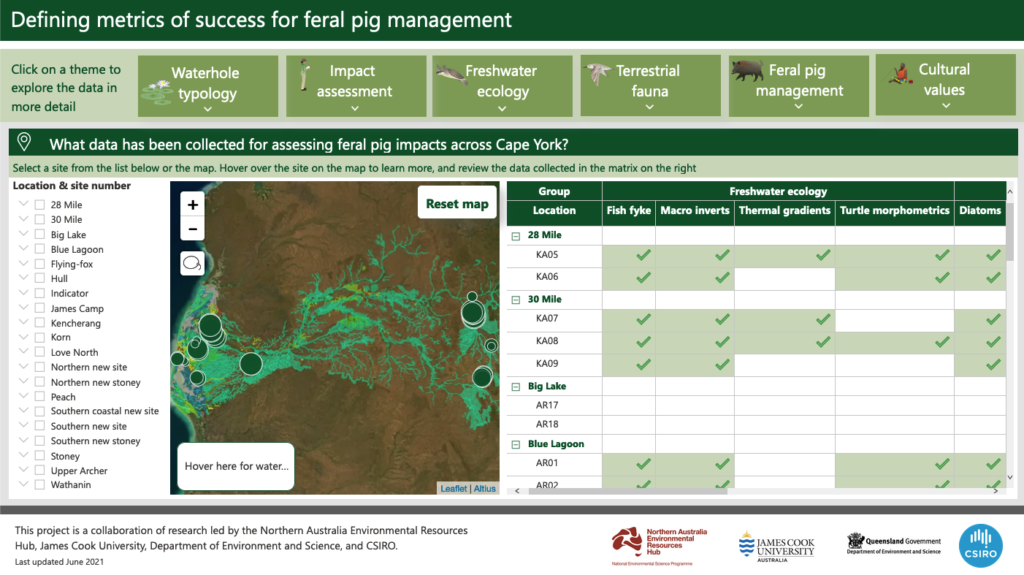27 July 2022
Authors: Patch Clapp and Justin Perry, Northern Australia Environmental Resources Hub, National Environmental Science Program
A research collaboration on Cape York Peninsula between Traditional Owners, land managers and scientists has improved understanding of how feral pigs use different types of wetlands and the extent of the damage they inflict on these important ecosystems.
On Cape York Peninsula, feral pigs cause substantial environmental damage. In the eyes of Mr Dion Creek, Southern Kaantju man and Chief Executive Officer of Kalan Enterprises, pigs are the single biggest problem on Cape York because ‘they destroy the waterways, wetlands and a lot of our important cultural sites.’

This research took place in the Archer River basin in north Queensland but the adaptive management framework proposed here can be used across northern Australia. Map: NESP Northern Australia Environmental Resources Hub.
There are an estimated 24 million feral pigs in Australia, and despite numerous efforts to control them throughout previous decades, their populations have continued to increase and leave wetland destruction in their wake.
Mr Mike Ronan, Manager – Wetlands, Department of Environment and Science (Queensland), explained that although pig damage is widespread throughout the landscape, previous work hadn’t quantified the impacts of pig damage on specific wetland types.
We wanted to understand how pigs were using certain types of wetlands at particular points in their lifecycle. That’s essential information. If we can coordinate and control the pigs at specific wetlands at pinch points in their lifecycle, then we can get increased value from pig management activities.
– Mr Mike Ronan, Department of Environment and Science (Queensland)

Feral pigs cause damage in numerous ways in and on the margins of wetlands. Photo: Samantha Setterfield.
To understand the effects of pigs on different wetlands, researchers first needed to improve the definitions of what makes one wetland different to another and ensure that these wetland ‘typologies could support the modelling of feral pig data and incorporate cultural values which are not always adequately considered when managing feral pigs.
Dr Justin Perry led a team of ecologists, human geographers, Traditional Owners and land managers who generated these updated and improved wetland typologies.
The scientists, land managers and rangers from CSIRO, James Cook University, the Queensland Department of Environment and Science, Kalan Enterprises and Aak Puul Ngantam Cape York further built on the updated wetland typologies to create an interactive dashboard that could help inform effective, robust and ongoing feral species control programs.
Using the typology, rangers and other land managers can identify the different types of wetlands in their management area and then use repeatable management and monitoring strategies to reduce the impact of feral pigs on important ecological and cultural wetland sites.
The interactive dashboard then provides a system that can be extended and modified by users to input and visualise the data. It enables cost–benefit analysis of control methods to compare investment against impacts, which supports better future decision making for land managers.

The Power BI dashboard visually summarises large datasets so that rangers and other land managers can make informed decisions about the best management options. Photo: NESP Northern Australia Environmental Resources Hub.
The strength of this collaboration is derived from finding opportunities for synthesis between the on-ground knowledge and priorities of Traditional Owners with the wetland and feral species management objectives of government agencies.
This project was led by Dr Justin Perry and supported through funding from the Australian Government’s National Environmental Science Program through its Northern Australia Environmental Resources Hub.
Want to know more about the Resilient Landscapes Hub's activities and our research into practical solutions to environmental problems? Stay informed about activities, research, publications, events and more through the Hub newsletter.